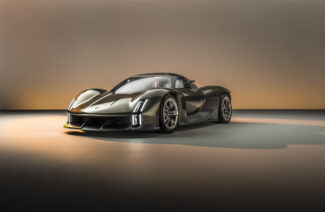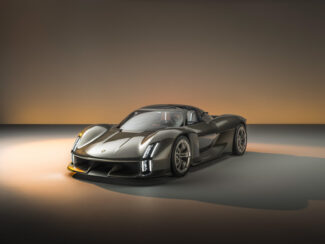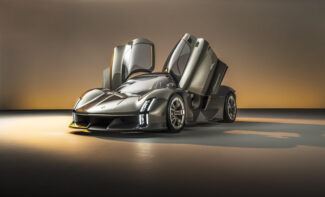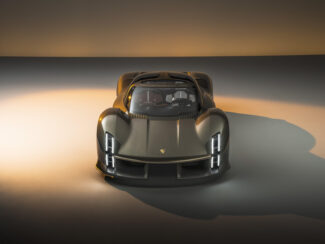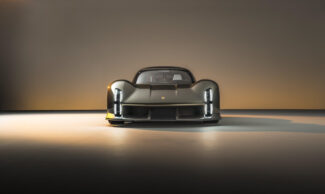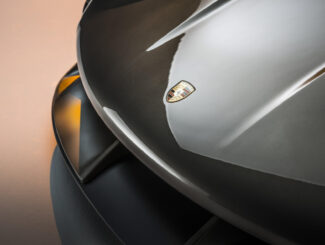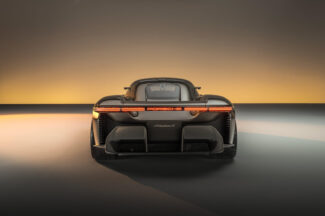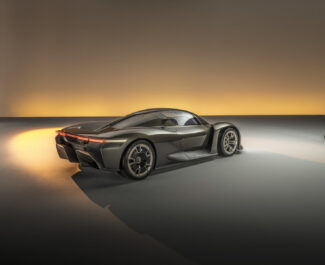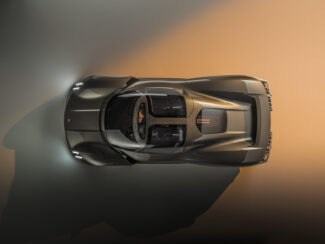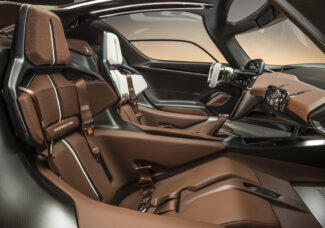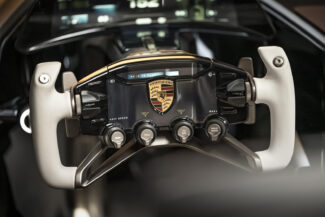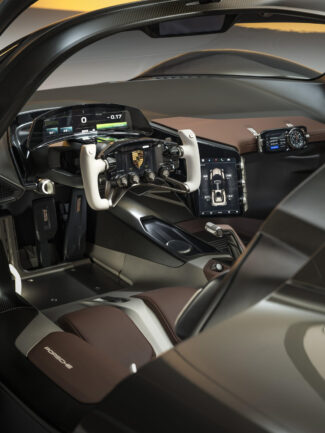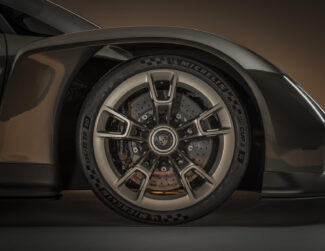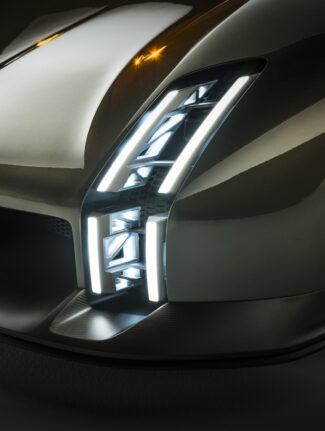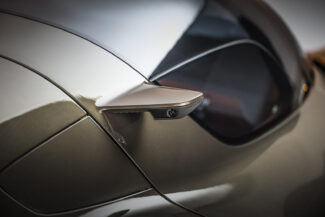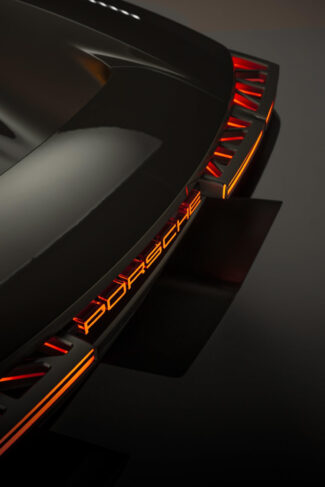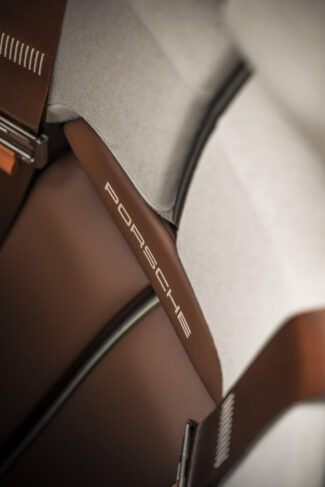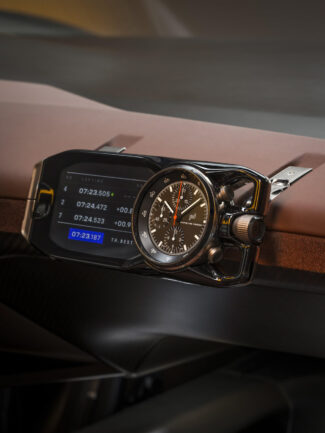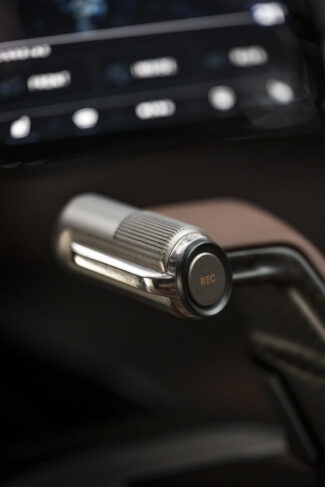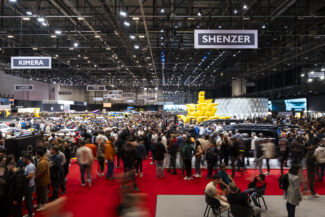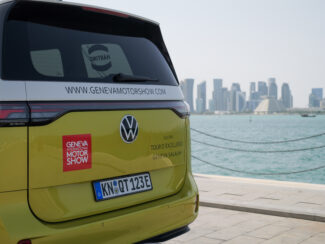As part of the celebrations for its 75th anniversary, Porsche unveiled the Mission X, an hypercar concept that embodies the brand’s rich history in this field.
After the 959 in 1983, the Carrera GT in 2003, and the 918 Spyder in 2013, 2023 was expected to see the release of a new Porsche super-/hypercar. And thus, the Mission X was born. Still in the concept stage, it represents the spiritual successor to this prestigious lineage. Like its predecessors, the Mission X provides a decisive impetus to the development of future models, inevitably equipped with an electric powertrain.
Inspired by racing
The Mission X appears rather compact, measuring 4.5 meters in length and 2 meters in width. Its wheelbase of 2.73 meters is identical to that of the Carrera GT and the 918 Spyder. Its overall shape and low height (1.2m) are reminiscent of the racing cars competing in the World Endurance Championship, and the door mechanism is clearly inspired by them as well.
At the front, the vertical double lights resemble the lighting signature of the 906 and 908, while the rear light strip is a nod to both the 959 and the current 963 models competing in the WEC. The Mission X also introduces a new, more streamlined version of the traditional Porsche emblem on its hood and steering wheel, as well as a monochrome version on the wheel hub caps.
A glass bubble with a carbon fibre-reinforced composite exoskeleton surrounds the cockpit. On board, everything is organized around the driver, as evidenced by the asymmetry of the passenger compartment in the choice of colours. The seat shells are integrated into the monocoque chassis.
Cutting-edge in every way
Porsche’s vision for the Mission X is clear and straightforward: pushing electric propulsion to the max, the Mission X, if produced as a series, should be the fastest road-legal model on the Nürburgring Nordschleife, boasting a power-to-weight ratio of approximately 1 kg/HP, exhibiting significantly higher downforce than the current 911 GT3 RS, and offering greatly improved charging performance with its 900V system design, charging twice as fast as the Taycan Turbo S, currently Porsche’s most powerful model in terms of charging speed.
The Mission X thus has a battery housed in the centre, behind the seats. This configuration, referred to as an “E-Core”, allows for a balanced mass distribution at the centre of the vehicle, similar to a traditional mid-engine model where this arrangement forms the basis for excellent agility.
While Porsche has not revealed detailed performance figures, the targeted power-to-weight ratio of 1 kg/HP sets the tone: it surpasses that of the Rimac Nevera, Bugatti Chiron, and other vehicles like the Lotus Evija. Only the AC Cobra Weineck 780 Cui, Koenigsegg Jesko, SSC Tuatara and Hennessey Venom F5, all of which are vehicles with internal combustion engines, manage to achieve a power-to-weight ratio lower than 1. While no official confirmation of production has been made, it seems highly unlikely that Porsche would limit the Mission X to just a “simple” design study.
Porsche/GIMS/JM

